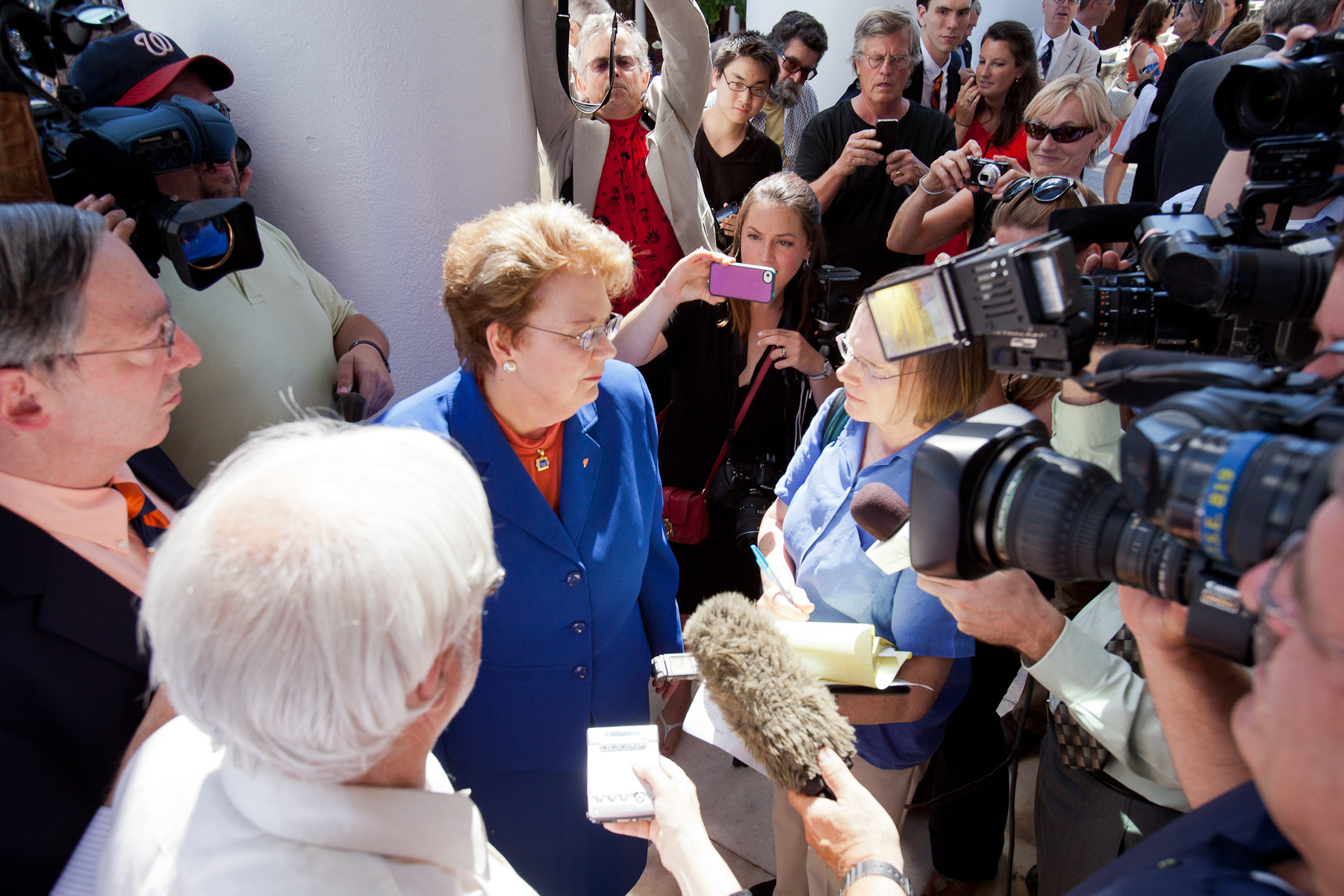Unspooling over the course of slightly more than a fortnight, the ouster and eventual reinstatement of University of Virginia President Teresa A. Sullivan grew from a front-page story in the local paper to a major national news story.
"This is definitely among the biggest stories of the year so far," said Scott Jaschik, editor of Inside Higher Ed, where coverage of the episode was among the most read and most commented-upon during the past two weeks, he said.
What made the story so big? It was a unique combination of factors, including how social media connected the extended, far-flung U.Va. community and enabled immediate response to the unfolding events, according to several U.Va. experts, including Center for Politics director Larry Sabato, a University Professor who has taught at U.Va. since 1978 and is perhaps the nation's most quoted professor.
"In the pre-social-media days, it was easier to pull off a palace coup," Sabato said. "By the time people could get mobilized, enough time had passed so that it was a fait accompli. Now the response is instantaneous.
"Many of us got hundreds of emails and tweets within hours of the email announcement of President Sullivan's dismissal. Shock quickly turned to hard questioning and anger, then mobilization.
"Traditional media coverage fed the social media reaction, and vice versa. Real emotion, high stakes and determined popular action created a 'Big Story.'"
A Facebook group, "Students, Family and Friends United to Reinstate President Sullivan," quickly grew to have thousands of followers (more than 16,000 as of today).
Among those who followed the story and offered comments on Facebook and Twitter, the theme that resonated most was U.Va.'s tradition of honor and a sense that Sullivan was dismissed in a dishonorable manner, said Siva Vaidhyanathan, a professor of media studies in the College of Arts & Sciences and an expert on social media, whose own Twitter feed swelled from 5,000 to 6,500 followers over the 17 days.
With the Board of Visitors citing "philosophical differences" and a failure to act quickly enough in the face of challenges facing higher education as the reasons for Sullivan's removal, "people were offended," said Bob Gibson, executive director of the Sorensen Institute for Political Leadership and formerly an award-winning veteran political writer. "You don't just suddenly fire a new president two years into her job for broad philosophical differences without a decent explanation."
Speculation filled the void and the media began to dig into things. One key turning point was the publication of an email from Peter Kiernan that suggested Sullivan's ouster was the result of a months-long "project" (and introduced the phrase "strategic dynamism" into the public consciousness). That email "gave the media a set of events that it could dig into to try and find the facts," Gibson said. "Had the Kiernan email not been exposed, this whole thing might have been a fait accompli."
Another turning point, Gibson said, was a Washington Post report that quoted several major U.Va. donors who supported Sullivan. That story "helped wake Richmond up to the depth of the crisis," he said.
Every new report – including ground-breaking reporting by the University's student paper, the Cavalier Daily – that tried to fill in some blanks was rapidly shared via social media. Without a clear explanation from the board, many alumni, faculty and friends wondered, Gibson said, "Why was big money trying to dictate something that even the faculty was totally surprised by?"
In the midst of the steady stream of reporting developments, the Faculty Senate spoke with a united, clear voice and focused on a call for honorable treatment of Sullivan, and on the importance of the breadth and depth of traditional liberal arts education, Vaidhyanathan said. They consciously avoided any messages that might alienate significant segments of the highly diverse U.Va. alumni community, he said.
The story also gathered national interest because it was emblematic of challenges facing higher education across the country, Sabato said. Among those challenges are declining public funding for higher education, steadily rising tuition costs, public debates over what should be taught at colleges during a fiscal squeeze, and questions of how to integrate emerging online education technologies.
Jaschik noted, "We're in a period of intense debate over the future of public universities, and this story seemed to grab readers as a way to think about those issues."
While the story has already been on the Washington Post front page 11 times and five times made the first page of the New York Times' national section, as well as being covered by NPR, Time and BusinessWeek (on top of being on the front page of The Daily Progress for 18 days straight), there is "still a lot of reporting yet to be done," Gibson said. "There are still enough people who care deeply about this that I think more will come out."
– by Brevy Cannon
Media Contact
Article Information
June 28, 2012
/content/social-media-focused-national-spotlight-sullivan-story

